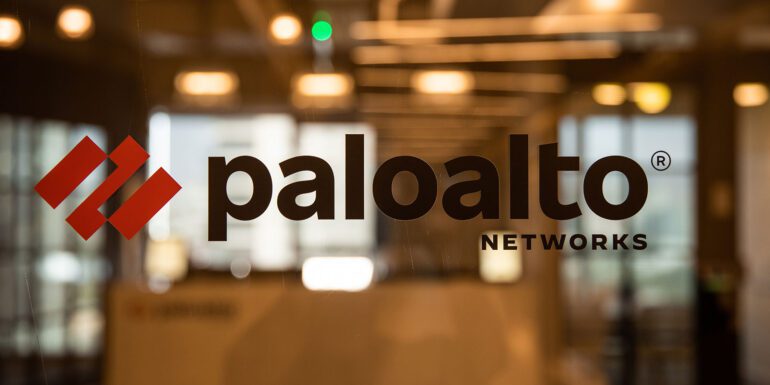TL;DR:
- Palo Alto Networks is developing its own proprietary large language model (LLM) to leverage generative AI technology.
- The company plans to launch the LLM within the next year and embed generative AI into its products and workflows.
- Palo Alto Networks reported $1.72 billion in revenue for Q3 2023, exceeding analyst expectations.
- Growth was driven by a secure access service edge platform (Prisma SASE) and an AI-driven security operations platform (Cortex XSIAM).
- CEO Nikesh Arora believes generative AI will improve core detection, provide a more intuitive user experience, and enhance operational efficiency.
- Palo Alto Networks aims to solve complex challenges by leveraging AI technologies.
- The company emphasizes the importance of data and scale in maximizing the benefits of generative AI.
- Palo Alto Networks’ financial success enables them to make significant investments in generative AI.
- The company has not released generative AI capabilities powered by existing LLMs yet.
- Palo Alto Networks is well-positioned to embrace generative AI for future advancements in the cybersecurity field.
Main AI News:
Palo Alto Networks, the cybersecurity giant, is making significant strides in the development of its own proprietary large language model (LLM), aiming to leverage generative AI technology across its product offerings and workflows. According to CEO Nikesh Arora, the company plans to unveil the LLM within the next year, foreseeing substantial opportunities in embedding generative AI into its solutions.
During the quarterly call with analysts, Arora emphasized the positive impact of generative AI on Palo Alto Networks’ core detection and prevention capabilities, enhancing the underlying efficacy of their product portfolio. Additionally, the company intends to employ generative AI to deliver a more intuitive and natural language-driven experience to users. By embracing this technology, Palo Alto Networks also anticipates achieving significant operational efficiency within its own processes.
The latest earnings report from Palo Alto Networks revealed impressive results that exceeded analyst expectations, even in the face of a challenging economic climate. The company’s secure access service edge platform, Prisma SASE, and AI-driven security operations platform, Cortex XSIAM, played a pivotal role in driving growth. With a year-over-year revenue increase of 24 percent, Palo Alto Networks reported $1.72 billion in revenue for its fiscal third quarter of 2023, ending on April 30. These figures exceeded the consensus estimate from Wall Street analysts for the quarter.
On the earnings front, Palo Alto Networks outperformed expectations, reporting non-GAAP net income of $1.10 per diluted share for its fiscal Q3. Analysts had anticipated 93 cents per share, making this a significant achievement for the company. Consequently, Palo Alto Networks’ stock price experienced a 3.75 percent surge during after-hours trading on Tuesday, reaching $196.85 per share. Furthermore, the company has revised its revenue and profit guidance for fiscal 2023, indicating a positive outlook for the future.
Generative AI emerged as a prominent topic during the quarterly call, with Arora emphasizing its potential for Palo Alto Networks. The CEO highlighted three key areas where generative AI could benefit the company. Firstly, it can enhance the core detection and prevention capabilities of their products. Secondly, it can facilitate a more intuitive and language-driven user experience. Finally, generative AI can drive operational efficiency within Palo Alto Networks’ internal processes and operations.
Palo Alto Networks’ Chief Product Officer, Lee Klarich, has also expressed his belief that the company’s use of generative AI will surpass current applications in the cybersecurity field. Klarich explained that the real value lies in leveraging AI technologies to solve complex challenges rather than superficial applications for demonstration purposes. By architecturally approaching these challenges, Palo Alto Networks aims to harness the potential of generative AI.
Arora stressed the advantages of generative AI for organizations with extensive data resources, a category that Palo Alto Networks falls into. The CEO stated that companies with large data lakes, particularly those that have built their business strategies around data, will benefit immensely from generative AI. Furthermore, Arora emphasized that sizable businesses stand to gain significant cost savings by investing in generative AI technology. By deploying an LLM, companies can achieve substantial efficiencies and reduce costs, enabling accelerated growth with limited resources.
While Palo Alto Networks has yet to release generative AI capabilities powered by existing LLMs, such as OpenAI’s GPT-4, the company’s focus on AI/ML integration in its products positions it well for future advancements in the field.
Conlcusion:
Palo Alto Networks’ development of its proprietary large language model (LLM) and its focus on leveraging generative AI technology signifies a significant advancement in the cybersecurity market. By incorporating generative AI into its products and workflows, Palo Alto Networks aims to enhance core detection, provide a more intuitive user experience, and improve operational efficiency.
This strategic move positions the company to stay at the forefront of the market, offering innovative solutions that address complex cybersecurity challenges. Furthermore, Palo Alto Networks’ strong financial performance and emphasis on data-driven strategies demonstrate its commitment to leveraging generative AI for sustained growth and competitive advantage in the evolving market landscape.

